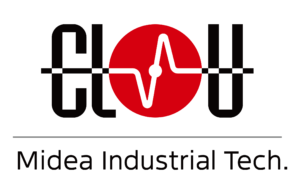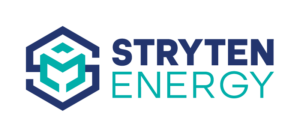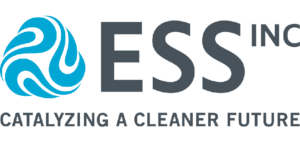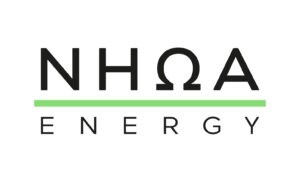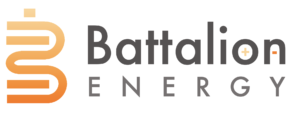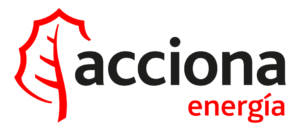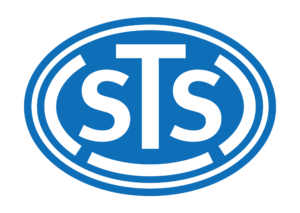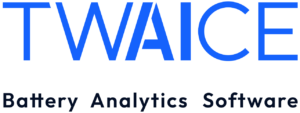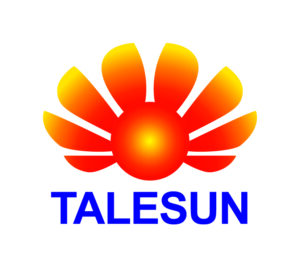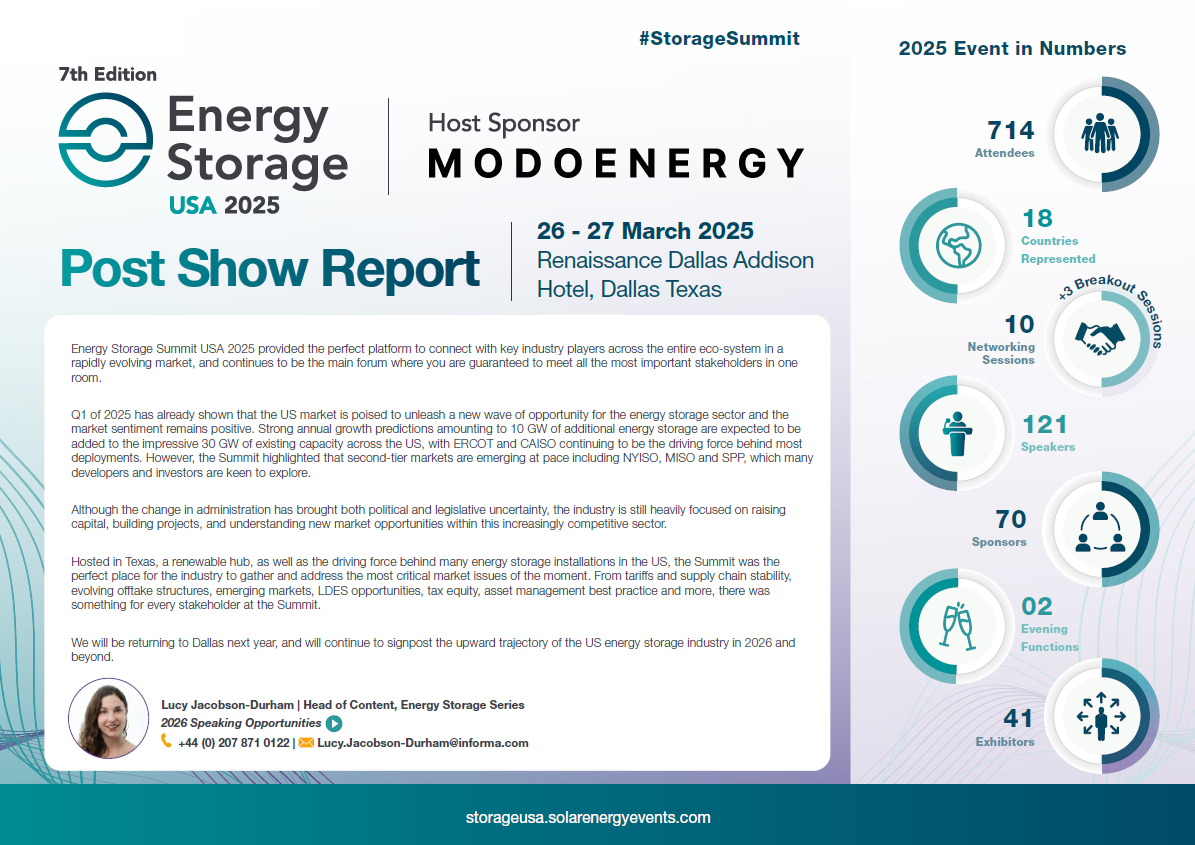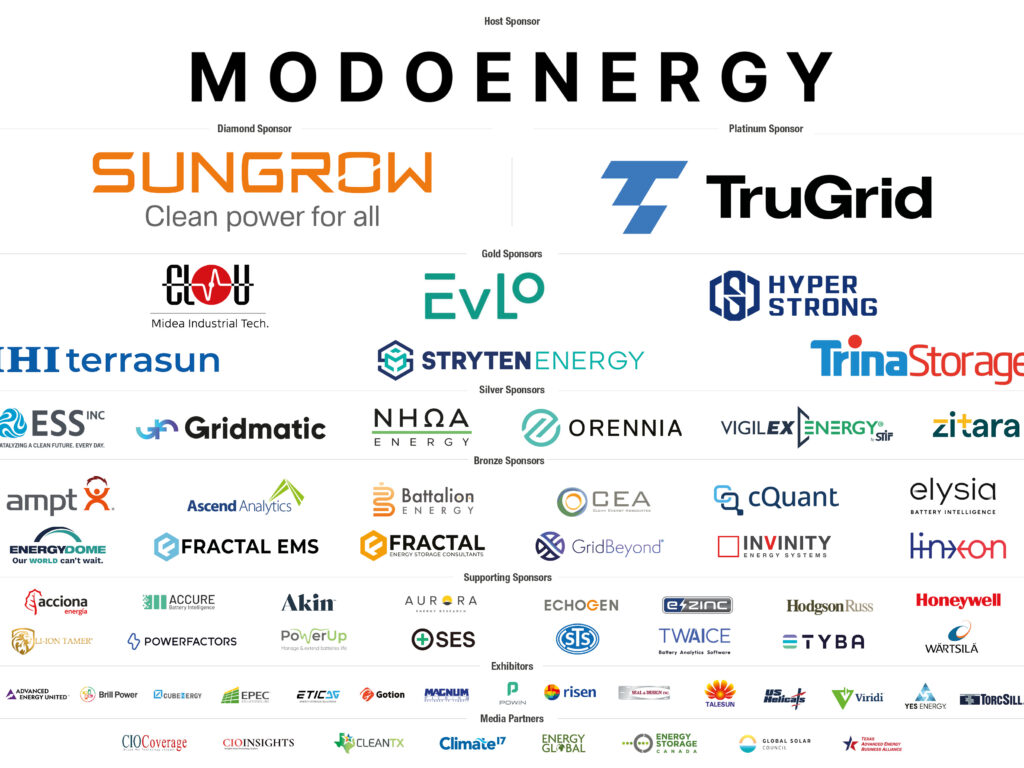Accelerating the Market for Energy Storage in the USA
Returning from the previous year’s sell-out event, the energy storage industry met in the heart of Dallas to discuss business. Attendees joined for two days of content, strategic networking, and the not-to-be-missed Summit afterparties at the 7th edition of the Energy Storage Summit USA.
Energy Storage Summit USA 2025 was the perfect platform to connect key industry players across the entire value chain of this buzzing US market. Hosted in Texas, a renewable and business hub, as well as the driving force behind many energy storage installations in the US this year, the Summit is the perfect place to meet with fellow industry players and address the most critical market issues.

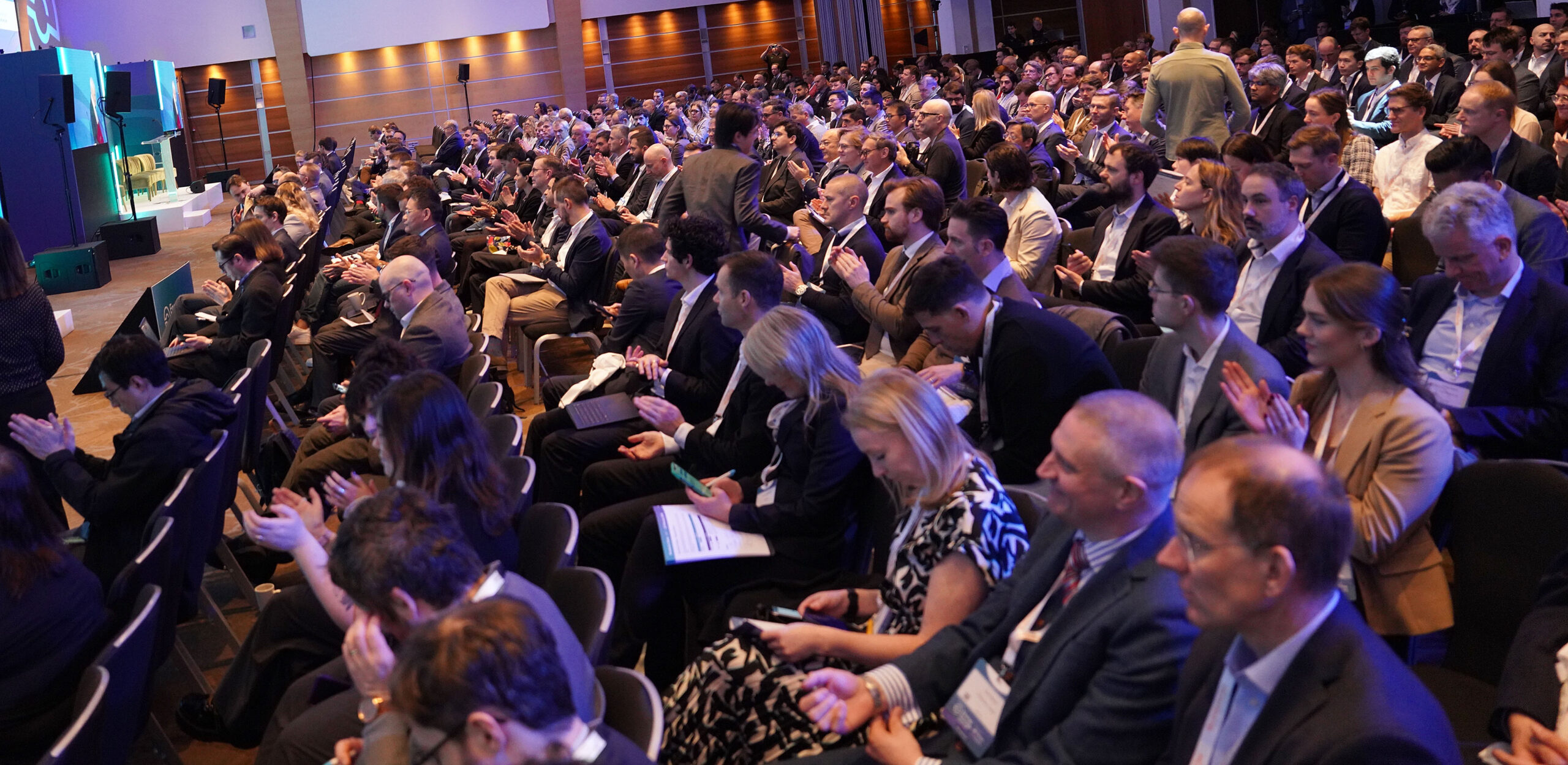


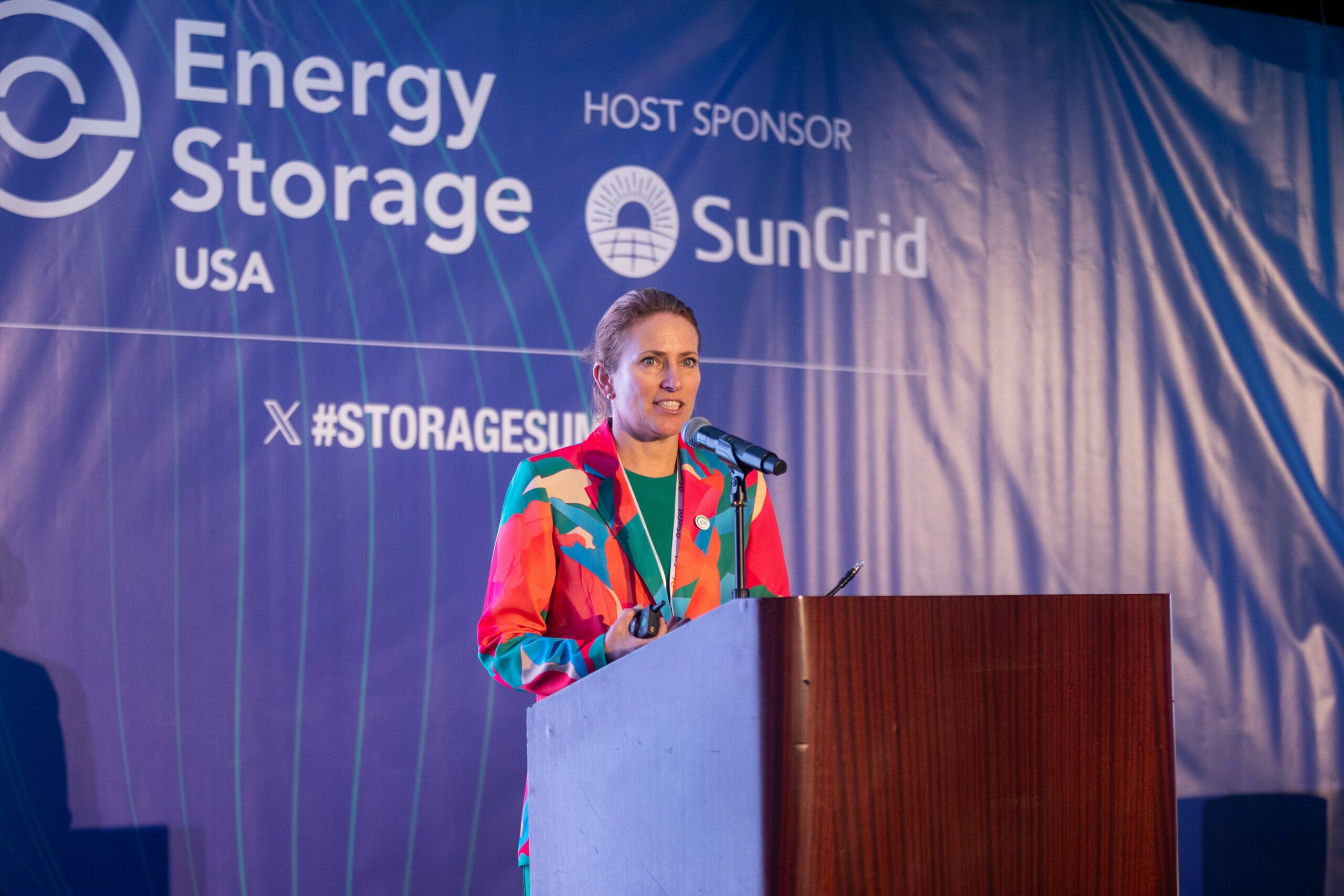

Thank You to Our 2025 Sponsors

Modo Energy is a B2B SaaS platform that helps renewable energy companies, funds, utilities, and banks manage and value their energy assets. The company specializes in batteries and provides data, analytics, and forecasting to help customers understand the financial performance of their energy assets.

As a key high-tech enterprise, Sungrow (Stock code: 300274) specializes in R&D, production, sales, and services of new energy equipment such as solar, wind, storage, hydrogen, and EVs. Main products include PV inverters, wind converters, storage systems, floating PV, EV driving systems, charging stations, hydrogen production, and smart O&M. Since 1997, Sungrow has driven growth through tech innovation in new energy power generation. With experienced researchers, Sungrow leads national science and technology initiatives, sets industry standards, and has earned recognition as a top innovative Chinese company and new energy leader. Holding national designations and focused on green practices, Sungrow pursues clean energy integration and power conversion advancements to provide "Clean power for all". Sungrow aims to be a world-class company by fostering customer relationships, participating in global markets, and innovating in clean energy technology.

TruGrid is a leading EPC (engineering, procurement, construction) and integration company that's rewriting the playbook for utility-scale battery storage and solar projects - putting integration at the forefront of our projects. TruGrid's team of experts specializes in bridging the gap between cutting-edge battery technology and design, integration and construction. By offering technology-agnostic solutions and a turnkey approach, we deliver bankable projects with lasting value and faster commissioning times. Plus, we provide comprehensive services, including operations and maintenance, giving customers the support they need for long-term success and value. Visit www.trugridpower.com.

CLOU Electronics Co., Ltd., founded in 1996, is a BNEF Tier 1 Energy Storage Manufacturer and PCS Inverter company under the Midea Group, a Fortune Global 500 company. In 2023, all nine sites of our TX10 project in Texas ranked in the Top 30 for ERCOT market revenue, according to Modo Energy, with $196K/MW in annual revenue. CLOU has almost 30 years of experience in the power industry. In the field of energy storage, CLOU made its entry in 2009. CLOU’s current energy storage portfolio includes the 5MWh+ Aqua-C2.5 Liquid-Cooled System, Aqua-E233 C&I Energy Storage System, Battery Management Systems (BMS), Power Conversion Systems (PCS), Energy Management Systems (EMS), and high-performance battery modules. Our U.S. office is located in Texas—you're welcome to visit us at 3801 East Plano Parkway, Suite 150, Plano, TX. Feel free to reach out via email at info.us@szclou.com as well!
EVLO designs, delivers, and operates energy storage systems with advanced safety and sustainability features. EVLO is a subsidiary of Hydro-Québec, North America’s largest renewable energy producer. As a full storage system service provider, we offer customized battery energy storage systems, control software, installation, commissioning, operation, inspection, monitoring and management. Our energy storage product line of containerized utility-scale systems caters to the needs of utilities, independent power producers (IPPs), microgrids, and large commercial and industrial (C&I) operations. Contact us to find out more about EVLO and the many benefits of our safe and sustainable energy storage solutions. EVLO Energy storage Inc
HyperStrong is a leading energy storage system integrator and service provider. Founded in 2011, with over 13 years of R&D and experience garnered through more than 300 projects and over 20GWh of deployment, HyperStrong offers a full portfolio of energy storage products as well as one-stop solutions for the full spectrum of utility-scale, commercial and industrial applications. Having built four smart manufacturing bases, three R&D centers, two testing labs and a global marketing center, HyperStrong empowers clients worldwide to achieve their energy transition and carbon neutrality goals. According to S&P Global, HyperStrong is ranked one of the top 3 energy storage system integrators worldwide in terms of installed capacity in 2023. In 2024, HyperStrong has been ranked in the BloombergNEF Energy Storage Tier 1 list for three consecutive quarters. For three consecutive years, the Electric Energy Storage Alliance (EESA) has ranked HyperStrong as the top ESS player by shipment volume in the Chinese market. For more information, please visit company website: www.hyperstrong.com or connect with us via LinkedIn: HyperStrong
IHI Terrasun Solutions (IHI Terrasun) is a pioneer in energy storage solutions, developing advanced power plant software and tailored field engineering services for battery energy storage projects. Founded in 2014, IHI Terrasun has been a trusted integrator, software developer, and services provider for projects from a few megawatt-hours to gigawatt-hours. The company’s system design software uses a proprietary algorithm for battery to inverter pairings to optimize project sizing for long-term performance and reliability. IHI Terrasun’s industry-leading power plant controls and monitoring software, paired with field engineering and maintenance services have demonstrated reliability, performance, and efficiency for operational projects all around North America. IHI Terrasun Solutions is a subsidiary of IHI Corporation, a multinational company based in Japan. Founded in 1853, IHI Corporation is a leader in infrastructure development, power services, energy management and renewable energy innovation with a global footprint of projects.
Stryten Energy helps solve the world’s most pressing energy challenges with a broad range of energy storage solutions across the Essential Power, Motive Power, Transportation, Military and Government sectors. Headquartered in Alpharetta, Georgia, we partner with some of the world’s most recognized companies to meet the growing demand for reliable and sustainable energy storage capacity. Stryten powers everything from submarines to subcompacts, microgrids, warehouses, distribution centers, cars, trains and trucks. Our stored energy technologies include advanced lead, lithium and vanadium redox flow batteries, intelligent chargers and energy performance management software that keep people on the move and supply chains running. An industry leader backed by more than a century of expertise, Stryten has The Energy to Challenge the status quo and deliver top-performing energy solutions for today and tomorrow. Learn more at stryten.com.
Trina Storage, a business unit of Trina Solar established in 2015, is a global leader in energy storage products and solutions, dedicated to transforming the way we provide energy. Our mission is to lead the renewable energy transition through cost-competitive storage and to provide Solar For Everyone by expanding solar generation at scale. Leveraging over 26 years of expertise in PV manufacturing, we offer cost-effective and flexible storage solutions to meet the diverse needs of our global customers. As a vertically integrated battery technology provider, we pride ourselves on our comprehensive capabilities, ranging from battery cell R&D and manufacturing to seamless integration. Our primary focus lies in utility scale projects, specifically in solar + storage as well as standalone application scenarios. We offer a robust, end-to-end solution that is highly bankable, cost-effective, safe, and reliable. Additionally, we are expanding our portfolio to cater to the residential and C&I segments, ensuring that homes and businesses alike can benefit from our cutting-edge offerings.

At ESS (NYSE: GWH), our mission is to accelerate global decarbonization by providing safe, sustainable, long-duration energy storage that powers people, communities and businesses with clean, renewable energy anytime and anywhere it’s needed. As more renewable energy is added to the grid, long- duration energy storage is essential to providing the reliability and resiliency we need when the sun is not shining and the wind is not blowing.
Our technology uses earth-abundant iron, salt and water to deliver environmentally safe solutions capable of providing up to 12 hours of flexible energy capacity for commercial and utility-scale energy storage applications. Established in 2011, ESS Inc. enables project developers, independent power producers, utilities and other large energy users to deploy reliable, sustainable long-duration energy storage solutions.

NHOA Energy is NHOA Group’s business unit that designs and delivers turn-key energy storage systems, transforming solar and wind farms into sustainable energy sources available 24/7. As a pioneer in microgrids with renewables and green storage systems, NHOA Energy ranks among the top global system integrators with almost 20 years of experience and over 2GWh of capacity online and under construction in five continents around the world. NHOA Energy with offices in UK, US, Taiwan and Australia, maintains research, development, and production of its technologies entirely in Italy. For further information, go to www.nhoa.energy
STIF, a publicly traded company on EURONEXT GROWTH PARIS, achieving a revenue of 60 million euros in 2024, is a global leader in manufacturing fire and explosion protection solutions for Battery Energy Storage Systems (BESS). Headquartered in France, STIF operates worldwide to ensure the safety and reliability of energy storage systems. VIGILEX ENERGY protection solutions are passive safety products designed to meet the environmental and technical constraints of BESS. Since 2022, we have been manufacturing vent panels specifically adapted to BESS, designed to relieve overpressure caused by explosions resulting from thermal runaway in lithium-ion batteries. These safety components are Atex EN 14491 certified and rigorously tested to open at the required pressure. Recently, we developed an innovative active solution, DUAL-VENT, which ensures both explosion and gas venting for BESS, further enhancing system safety. Our solutions provide a minimum protection rating of IP66, ensuring high waterproof level and resistance in demanding environments. To reduce CO2 emissions and meet the needs of our global customers, STIF manufactures on three continents, with production facilities in France, China, and the USA.
SES AI Corp. is powering the future of global electric transportation on land and in the air with the world’s most advanced Li-Metal batteries. Founded in 2012 and headquartered in Boston, with operations in Singapore, Shanghai, and Seoul, SES AI is the first battery company in the world to accelerate its pace of innovation by utilizing superintelligent AI across the spectrum of its business — ranging from battery material R&D (Molecular Universe), cell design, engineering, and manufacturing, to battery health and safety monitoring (Avatar). Its AI-enhanced, high-energy density and high power density Li-Metal and Li-ion batteries are the first in the world to contain electrolyte materials discovered by AI. SES AI’s mission is to accelerate the world’s energy transition through material discovery and battery management.

Ampt delivers innovative power conversion and communication technology that are used to lower the cost and improve the performance of new PV systems, repower existing systems, and enable lower-cost DC-coupled storage. With installations and experience serving markets around the world, Ampt is the #1 optimizer company for large-scale systems. The company was founded in 2007 and is headquartered in Fort Collins, Colorado with sales and support locations in North America, Europe, Japan, and Australia as well as representation in Asia and the Middle East. For more information, visit www.ampt.com.
Ascend Analytics, an innovative leader at the forefront of the energy transition, offers advanced software and consulting services that capture the evolving and real-time dynamics of energy markets. Ascend Analytics provides its customers with optimized and comprehensive decision analysis that span long-term planning to real-time operations in the power industry. Leveraging more than 20 years of expertise, Ascend bridges fundamental physical system conditions with financial outcomes. The company provides critical and highly precise insights to steward capital investments and manage operations, making it an invaluable and key partner to utilities, developers, financiers, and corporate off-takers in managing the complexities of energy portfolios and markets. The company's unique ecosystem - which includes planning, valuation, risk management, and power market operations – is trusted by more than 300 leading-edge businesses and is the platform-of-choice that fuels more than $6 billion in asset investments.
CLEAN ENERGY ASSOCIATES helps buyers and long-term owners of solar and energy storage equipment buy the right products and ensure they are properly manufactured and installed. The rapid growth of the clean energy industry is exhilarating but the explosion of new technologies, new companies, new factories, new markets, and new business models can be hard to stay on top of and brings new risks. From our headquarters in Denver and our Asian base in Shanghai, CEA provides our clients with investment confidence as we allow them to get a "peek behind the curtain" to understand what is really happening upstream in supply chains and production facilities and downstream in project design and execution. CEA's global team has helped our diverse customer base of project developers, EPCs, IPPs, and financial institutions understand industry trends and market dynamics, select the best suppliers, negotiate the best contracts, carefully audit production processes, test equipment in the field, and perform technical and acquisition due diligence. Our experience executing over 175 GW of solar and 15GWh of storage projects in over 70 countries, including work in over 350 production facilities, is invaluable to our clients as they navigate the ever-changing and hyper-competitive landscape of clean energy. CEA is a subsidiary of Intertek Group plc, a FTSE listed company based in London, with 1,000 test labs and 44,000 professionals working in 100+ countries.
Founded in 2016, cQuant.io is an industry leader in analytic solutions for energy and commodity companies. Specializing in Total Portfolio Analysis, cQuant’s cloud-native SaaS platform simulates all risk factors, optimizes portfolio decisions, and includes dynamic reports and dashboards for better decision making. cQuant’s customers have greater insight into their financial forecasts and the drivers of value and risk in their business. cQuant is a team of senior quantitative model developers, experienced energy analysts, software developers and cloud infrastructure experts. Leveraging decades of energy experience, cQuant is committed to serving the present and future analytic landscape with the most accurate models and highest performance in the industry. The field of analytics is changing rapidly and cQuant is dedicated to offering the latest advantages to their customers.
Energy Dome is at the forefront of redefining long-duration energy storage with its CO2 Battery. The properties of carbon dioxide allow the system to store energy efficiently and cost-effectively through a patented thermodynamic process. CO2 Batteries use readily available, off-the-shelf components from reliable, existing supply chains, providing a scalable pathway to accelerate the energy transition. Energy Dome is commercializing the CO2 Battery on all five continents and in over 40 countries. energydome.com
Elysia is a world-leading battery intelligence offering from Fortescue WAE, bringing over a decade of battery expertise to the automotive, micro mobility and battery energy stationary storage markets. Elysia’s state-of-the-art embedded and cloud-based products provide customers – including global storage BESS OEMs, storage operators and battery asset financiers – with unprecedented access to battery insights, and the ability to manage, optimise and enhance performance across the battery’s entire lifecycle.
Fractal EMS is a global leader in energy management systems for energy storage and renewable energy assets. Fractal EMS provides a comprehensive energy management suite of software, controllers, integration, and analytics (with options for 24/7 monitoring and market dispatch optimization. Fractal EMS was designed for mission-critical assets with stringent performance, uptime, and cybersecurity requirements. Fractal EMS is the industry's only fully vertical controls provider with hardware-agnostic, turnkey solutions for BMS, EMS, and MPC, enabling buyers to choose different equipment for different projects using a unified software and controls platform. Learn more at www.fractalems.com.
GridBeyond's vision is to deliver a global zero carbon future. By leveraging AI, we innovate and collaborate with our customers to create optimal value from energy generation, demand and storage to deliver a zero-carbon future. By bridging the gap between distributed energy resources and electricity markets, GridBeyond’s technology means every connected asset – whether utility-scale renewables generation, battery storage, or industrial load – can be utilized to help maximize opportunities and enhance the grid. By intelligently dispatching flexibility into the right market, at the right time, asset owners and energy consumers unlock new revenues and savings, resilience, and management of price volatility, while supporting the transition to a Net Zero future.
Invinity is a global leader in non-lithium energy storage. Our modular vanadium flow batteries deliver best-in-class throughput, safety, and efficiency, and have been deployed at over 80 projects around the world. In December 2024 we launched our fourth-generation ENDURIUM product for general sale, taking our proven technology and optimising it for large scale systems up to a gigawatt-hour and beyond with discharge durations from 4-18 hours. The first non-lithium Tier-1 energy storage supplier recognised by BNEF, our system performance has been independently validated in DNV bankability studies and is proudly manufactured and supported by our facilities in the UK and North America.
Linxon, founded in September 2018, is built on a legacy of over 100 years of technological expertise and 60 years of global experience in substation and electrification projects. A joint venture between AtkinsRéalis and Hitachi Energy, Linxon combines industry-leading project management and advanced technology to deliver innovative, sustainable solutions. The company specializes in engineering, procurement, project management, and construction of complex power substations, supporting industries like Power Generation, Transportation, Utilities, Data Centers, and Battery Energy Storage. Linxon’s projects play a vital role in strengthening the power transmission grid, enabling urban growth, industrial expansion, and community development.

ACCIONA Energía is the largest 100% renewable energy company with no fossil fuel legacy in the world. It owns and operates more than 14 GW (of which 2,800 MW are in the US and Canada) of renewable energy and commercial operations in 24 countries across five continents. In 2023, ACCIONA Energía reached €3.55 billion of revenues and €1.28 billion of EBITDA, with production of 24.9 TWh, and close to 3,099 employees. https://www.acciona-energia.com/
ACCURE Battery Intelligence helps companies reduce risk, improve performance, and maximize the business value of battery energy storage. Our predictive analytics solution simplifies the complexity of battery data to make batteries safer, more reliable, and more sustainable. By combining cutting-edge artificial intelligence with deep expert knowledge of batteries, we bring a new level of clarity to energy storage. Today, we support 2.6+ GWh for customers worldwide, helping optimize the performance and safety of their battery systems. Visit us at accure.net
Future-focused and dedicated to excellence, Akin is an elite law firm that helps clients anticipate what is next and navigate a path to success. Akin has, in the span of a single generation, grown to become one of the world’s largest firms, with more than 900 lawyers practicing in an array of practices and industries in offices around the globe.
Established in 2013, Aurora Energy Research is a leading global provider of power market forecasting and analytics for critical investment and financing decisions. Headquartered in Oxford, England, we operate out of 15 offices worldwide covering Europe, North & South America, Asia, and Australia. Our comprehensive services include market outlook packages for energy industry participants, advisory support, and innovative software solutions. We foster diversity with a team of over 800 experts with backgrounds in energy, finance, and consulting, offering unparalleled expertise across power, renewables, storage, hydrogen, carbon, and fossil commodities. Our mission is to facilitate the global energy transition through widely trusted quantitative analysis and high-quality decision support.
Founded in 2012, e-Zinc has developed a breakthrough zinc-air battery energy storage system which addresses the 10-100+ hour duration market in a cost-competitive manner. We provide the platform for the world’s energy markets to be fully powered by renewable energy, enabling a zero-carbon energy future. The technology stores energy through the creation of zinc as a metal, this approach decouples power from energy capacity, poses no risk of thermal runaway, and provides substantial flexibility to customers (kW to 100’s of MW). e-Zinc’s technology addresses both behind-the-meter (BTM), and front-of-the-meter (FTM) utility-scale applications for a variety of technical use cases. The first-generation product has a strong economic value proposition for customers, including:
- Energy savings through demand management, peak shifting, and time-of-use arbitrage
- Resilience and back-up power for longer-duration power outages
- Sustainability and GHG reduction through diesel abatement and the pairing with solar
Echogen, headquartered in Akron, OH, is a pioneering developer of supercritical carbon dioxide (sCO₂) pumped thermal energy storage (PTES) technology. Our proprietary sCO₂-based PTES system provides a safe, reliable, low-cost, and scalable long-duration energy storage (LDES) solution designed to accelerate the transition to baseload renewable energy. Echogen is also extremely proud to be the technology behind the DOE POLAR project, a groundbreaking collaboration with Westinghouse Electric Company, Golden Valley Electric Authority, and the U.S. Department of Energy. This initiative will deploy a 1,200 MWh PTES system at the Healy Power Plant in Alaska, delivering a continuous output of 50 MW for 24 hours. The POLAR project will play a crucial role in stabilizing electricity supply for the Alaska Railbelt region, reducing energy costs, and improving air quality — marking a significant step forward in sustainable and resilient energy infrastructure. Through a strategic partnership with Westinghouse Electric Company, Echogen is expanding its global footprint, bringing cutting-edge energy storage solutions to markets worldwide. By leveraging our breakthrough technology and industry-leading expertise, Echogen is shaping the future of clean, efficient, and sustainable energy storage.
A full service law firm with more than 200 attorneys, Hodgson Russ facilitates business transactions around the world. Our attorneys utilize multidisciplinary work teams to meet clients’ specific, often complex needs. Clients include public and privately held businesses, governmental entities, nonprofit institutions, and individuals. Hodgson Russ has offices in Albany, Buffalo, Greensboro, Hackensack, New York, Palm Beach, Rochester, Saratoga Springs, and Toronto. To learn more, visit www.hodgsonruss.com
Honeywell creates fire and life safety products that leverage connectivity to help create a smarter and safer world. We equip customers with life safety systems that provide the earliest detection, enable the fastest response as well as centralize decision making and management. We aim to create innovative technology design to keep people, including those responsible for saving lives, safe.
JERA Nex is a company created by JERA to scale renewable energy for a sustainable future. JERA Nex combines the resilience of JERA, one of the world’s largest electricity producers, with the agility and focus of a dedicated renewables business that can act at the pace required to drive the global energy transition. JERA Nex invests in, currently owns and operates a global portfolio of renewable energy assets, with a portfolio over 3.4GW that includes offshore wind, onshore wind and solar, as well as battery storage. This includes Parkwind, its wholly owned subsidiary. Headquartered in London, with a team of more than 300 renewable and energy industry experts, JERA Nex combines global experience with the local expertise and knowledge necessary to deliver successful projects. Find out more at www.jeranex.com and follow us on LinkedIn.
Li-ion Tamer is at the forefront of enhancing energy storage system safety through advanced gas detection technology specifically designed for lithium-ion batteries. Our work began in 2010 in collaboration with the U.S. Navy, researching early warning solutions and battery protection using gas detection. Since then, Li-ion Tamer has been deployed across multiple gigawatt-hours of energy storage projects worldwide. As lithium-ion batteries continue to power an increasing share of modern infrastructure, we have expanded our product offerings to support a wide range of applications, including battery energy storage systems (BESS), data centers, uninterruptible power supply (UPS) systems, electric vehicles, battery packs, and gigafactories where cells are manufactured. Li-ion Tamer integrates a unique set of features to provide early warning capabilities that serve as a critical barrier against thermal runaway while ensuring compliance with NFPA 69 explosion control requirements. Start the conversation with Li-ion Tamer today at www.Li-ionTamer.com.
Power Factors develops software that accelerates the global energy transition by empowering all renewable energy stakeholders to collaborate, automate critical workflows, and make the best decisions. Power Factors fights climate change with code. Power Factors has incorporated its four flagship solutions Drive, Greenbyte, BluePoint, and Unity to build an integrated suite of open and smart apps. These apps are purpose built for asset management, field service optimization, and performance optimization. Leveraging the domain expertise and machine learning-based advanced analytics within these apps, customers can maximize the value of their renewable assets to stay competitive. Power Factors’ renewable energy software platform is one of the most extensive and widely deployed solutions in the market with nearly 207 GW of wind, solar, hydro, and energy storage assets managed worldwide.
PowerUp develops advanced battery analytics solutions that ensure a safe and reliable usage of batteries. By considering their actual use, its advanced algorithms and software allow to predict and prevent batteries critical issues, as well as maximize their performance and lifetime. These solutions support all kinds of lithium-ion critical batteries applications of which Battery Energy Storage Systems.
About SES AI: SES AI Corp. is powering the future of global electric transportation on land and in the air with the world’s most advanced Li-Metal batteries. Founded in 2012 and headquartered in Boston, with operations in Singapore, Shanghai, and Seoul, SES AI is the first battery company in the world to accelerate its pace of innovation by utilizing superintelligent AI across the spectrum of its business — ranging from battery material R&D (Molecular Universe), cell design, engineering, and manufacturing, to battery health and safety monitoring (Avatar). Its AI-enhanced, high-energy density and high power density Li-Metal and Li-ion batteries are the first in the world to contain electrolyte materials discovered by AI. SES AI’s mission is to accelerate the world’s energy transition through material discovery and battery management.
Established in 2010 by seasoned French solar industry experts, STS is dedicated to safeguarding buyers’ investments in renewables by deploying pertinent solutions that solve their challenges. Recognizing the need for innovative solutions, we offer tailored technical and advisory services for our clients to make informed decisions. Leading the way in solar conformity assessment, STS is the very first ISO17020-accredited inspection body for renewables. We set the industry's first standard for the approval of PV module manufacturing and dispatch and trailblazed sustainability assessments in the industry. Operating in 15 countries with the global in-house inspector fleet, we serve top global developers, EPCs, independent power producers, and utility companies in over 30 countries (conducting over 300 quality assessment projects annually). Our commitment to impeccable service delivery, reflected in our high Net Promoter Score, ensures client trust and loyalty, solidifying our reputation as a trusted industry leader. Join our community of satisfied clients. For more information, visit www.sts-certified.com.
TWAICE is the leading provider of battery analytics software, helping companies working with batteries to eliminate risks and enable opportunities. Customers using TWAICE outperform their peers by saving time & costs while increasing battery performance, safety & lifetime. Uniquely combining deep battery knowledge and artificial intelligence on a scalable analytics platform, TWAICE generates actionable insights at every step of the battery lifecycle. In addition to enabling TWAICE products, the analytics platform is a launchpad for customer and partner solutions, leveraging an entire ecosystem of market leaders.
Tyba helps energy companies maximize the profitability of energy projects with a unified simulation and operations platform. Developers, owners, and operators use Tyba as their mission control center - to inform and automate energy storage operations, while maintaining the ability to make strategy adjustments with the click of a button. This approach helps their partners - including TotalEnergies, White Pine Renewables, and Linea Energy - maximize project revenue and sustainably scale their portfolios. We believe that profitable renewable energy investments are essential to ensure the clean energy transition. With Tyba, profit maximization and grid decarbonization go hand-in-hand.
As a global energy storage leader, Wärtsilä Energy Storage & Optimisation offers hardware, software, and lifecycle solutions that unlock more efficient and optimised power systems. Putting safety and intelligence at the forefront, our suite of Quantum energy storage systems solves fundamental industry-wide safety challenges and our advanced software, GEMS, monitors, controls, and optimises energy assets at both site and portfolio levels. With a global portfolio that exceeds 13 GWh, we are helping drive the transition to a resilient, 100% renewable grid.

Advanced Energy United educates, engages, and advocates for policies that allow our member companies to compete to repower our economy with 100% clean energy. We work with decision makers at every level of government as well as regulators of energy markets to achieve this goal. The businesses we represent are lowering consumer costs, creating millions of new jobs, and providing the full range of clean, efficient, and reliable energy and transportation solutions. Together, we are united in our mission to accelerate the transition to 100% clean energy in the United States. Advanced Energy United is online at AdvancedEnergyUnited.org and @AdvEnergyUnited.
Brill Power is a company with roots in the Engineering Department at the University of Oxford revolutionising energy storage. With world-class experts in battery and power management, edge computing, and data analytics, it delivers its pioneering Battery Management System to the market aimed at stationary energy storage and electric vehicles. An end-to-end solution to battery management, the platform uses patented active loading technology, enabling benefits such as up to 60% longer battery lifetime, improved safety and increased redundancy and the ability to extract more energy from batteries to increase revenues. It is scalable to any system and benefits from integrated DC/DC conversion. Brill Power’s hardware and chemistry-agnostic operating system includes over-the-air (OTA) updates delivering a flexible, scalable and future-proof BMS. Its analytics cloud-based platform delivers end-to-end data and insights for safe and optimal battery use with predictive analytics and a flexible interface. Brill Power’s first BMS+ for the stationary storage market launched in 2021 followed by the BESA BP6X1 BMS+ in 2023.
Cubenergy is an innovative solution provider of C&I and utility-scale Battery Energy Storage System (BESS). By integrating BESS with grid, PV, wind turbine, diesel generator, and other sources of energy with in-house developed battery system, BMS and EMS, forming a series of standardized, all-in-one, integrally transportable and EPC-free ESS. Cubenergy follows the highest standards and codes in manufacturing its products. The ESS products are certified in line with CE, IEC62933, UL9540, UL9540A, NFPA855 etc. Cubenergy bankability reports facilitate developers to have the ESS projects well funded and insured. The future of energy is decentralized, clean, and consumer-centric. Cubenergy is committed to making Renewable Energy Never Stops.
EPEC is your premier choice for PV, BESS, EV, and data centers electrical solutions, ranking among the best electrical switchboard manufacturer companies in the USA. EPEC UL 891 Certified Switchboards (SWBD) power over 1.5 GW of PV, BESS, and data center projects. Available with chassis sizes from 400A to 6000A, they are built in North Carolina and have industry-leading ETAs of 16 to 24 weeks. They feature an innovative, compact design that delivers exceptional value and has garnered praise from top engineers, EPC's and developers. These customers have validated the SWBDs unmatched performance and reliability in challenging environments. Let the EPEC/ReBoSS team assist your team with your next project. About EPEC Solar Solutions - Solar & EV Charging | North America ReBoSS is the national agent for EPEC SWBDs across the USA and Canada.
EticaAG provides innovative and scalable Battery Energy Storage Systems (BESS) for both commercial and military applications. Leveraging industry expertise, we deliver solutions for energy optimization, backup power, and sustainability. Our cutting-edge immersion cooling technology ensures superior safety and efficiency by directly cooling battery cells, preventing thermal runaway and enhancing fire suppression. With a focus on safety and performance, EticaAG integrates advanced technologies to meet the diverse energy needs of businesses and military operations across various sectors.
Gotion High-tech, founded in 2006, is a leading global developer and manufacturer of new energy batteries, headquartered in Hefei, China. With over 30,000 employees across four continents, Gotion operates a vertically integrated supply chain, from mineral extraction to battery recycling, specializing in lithium iron phosphate and ternary batteries for electric vehicles and energy storage. Gotion Inc. (USA) is driving domestic manufacturing in the US. Committed to "making green energy accessible and sustainable," Gotion achieved over $4 billion in revenue in 2023 and is recognized by BloombergNEF as a Tier 1 BESS company.
For over 40 years, Magnum® Piering has been dedicated to designing, engineering, and manufacturing, the most trusted foundation and anchoring products for the Commercial, Electrical Power, Oil & Gas, Renewable Energy and Residential Construction Industries. Magnum® Piering has worked diligently to elevate the standards of the foundation industry with a proven customer support team and through a multi-step quality control system. We are your trusted foundation team.
Powin is a global leader in the design and manufacture of safe and scalable energy storage solutions. Our innovative and cost-effective hardware and software are revolutionizing the way energy is generated, transmitted, and distributed, helping the world achieve decarbonization objectives. Powin has delivered over 2,500 MWh of BESS in over 8 different countries and has a contracted pipeline to supply over 10,000 MWh of energy storage systems globally over the next three years.
For 35 years, Seal & Design has been a leader in the production and distribution of seals, gaskets, hoses, fabricated rubber components, and more for customers in the BESS, EV, and other sectors. We continually exceed our customers’ expectations with outstanding service and quality products. Our certifications include ISO 9001:2015 and IATF 16949:2016, a globally recognized quality standard for the automotive industry. We operate a 100,000-square-foot facility at our headquarters in Clarence, NY, near Buffalo, and have three additional divisions around North America. Our engineering and manufacturing capabilities are complemented by value-added services, including custom packing and labeling for automation, and stocking programs.
Talesun Solar, founded in 2009, is a core renewable energy enterprise of a Fortune Global 500 company (ranked #85). As a leading global provider of solar solutions, Talesun has delivered over 40 GW of high-efficiency solar modules to power grids worldwide. Since 2015, Talesun has been listed on the BloombergNEF(BNEF) Tier 1 list—a benchmark for bankable manufacturers. We specialize in end-to-end solar solutions, including premium photovoltaic modules, performance-optimized cables, and tailored financing programs designed for diverse energy needs. With state-of-the-art manufacturing facilities strategically located in the United States, the Asia-Pacific region, the Middle East, Africa, and China. Talesun ensures localized production capabilities to serve global markets efficiently.
US Helicals LLC, promotes the use of deep foundations that specialize in helical pile technology. Helical piles are a great option for the Battery storage and Renewable Power markets, where soils are poor. Helical piles are a segmented deep foundation that uses the native soils to support the asset. This lowers the environmental impact of the site construction and reduces the carbon emissions of the construction project by up to 50%. There are no installation vibrations or soil spoils from the installation, and typically are 66% faster to install than concrete piles. Due to the design of helical piles, they are also great for temporary foundations, because they can simply be unscrewed and removed. Our vertically integrated company can provide engineering, fabrication and actual installation of the helical piles anywhere in the United States.
Yes EnergyⓇ is how traders, power companies, and asset managers and developers can finally make sense of the complex, rapidly changing power market. You get accurate and timely data, comprehensive tools, and a specialized partner to help you make the right decisions every day.
It’s time to Win the Day Ahead™. And it takes three things to do that. Better Data – constantly updated from public, partner, and proprietary sources, then cleaned and standardized for ease of use. Better Delivery – with flexible options, whether you need an all-in-one solution for analyzing and making trades, or an API, data lake, or cloud-based database. And Better Direction – from a proactive team of power market and technology experts who’ve been in your position before.
Only Yes Energy brings you this unique combination of Better Data, Better Delivery, and Better Direction. That’s why so many power market leaders from hedge funds to renewable developers to trading firms all rely on us to help them Win the Day Ahead.
Orennia is your all-in-one platform for accurate data, predictive analytics and actionable insights across the energy transition. Make more efficient capital-allocation decisions and maximize returns across the solar, wind, storage, power, RNG, CCUS, clean fuels and hydrogen sectors. The technology that powers Orennia’s platform delivers an unparalleled experience, distilling information into actionable insights to give you a competitive edge.
Viridi is revolutionizing energy storage with fail-safe distributed technology, providing on-demand power and unparalleled safety and scalability for use in and around occupied spaces and critical equipment. Committed to a zero-carbon future, we lead the charge in sustainable energy innovation. Our flagship product, the RPS150 Energy Storage System (150kWh), is a pioneering solution. Installed at the point of use, it offers unmatched versatility and efficiency compared to centralized systems. Its compact, rugged design ensures durability across diverse environments, enhancing grid stability by efficiently storing energy and balancing demand. Seamless integration with renewable sources like solar panels guarantees a reliable power supply. The system's modular design allows for customization, while advanced IoT enables remote monitoring and control. Leveraging advanced data analytics and real-time AI optimization, Viridi ensures the performance and sustainability of your deployed assets, promoting resilience in energy management.
Risen Energy is a leading, global, Tier1, “AAA” credit-rated manufacturer of high-performance solar photovoltaic products and a provider of total business solutions for power generation. The Company, founded in 1986 and publicly listed in 2010, compels value generation for its global customers. Techno-commercial innovation, underpinned by consummate quality and support, encircle Risen Energy total Solar PV business solutions which are among the most powerful and cost-effective in the industry. With local market presence, and strong financial bankability status, we are committed, and able, to building strategic, mutually beneficial collaborations with our partners, as together we capitalize on the rising value of green energy.

Download our Energy Storage Summit USA 2025 Post Show Report to learn more about:
- The Breakdown of Who Attended
- What Highlights the Summit Had
- 2025 Participating Companies
- Global Energy Storage Portfolio
2025 Key Themes


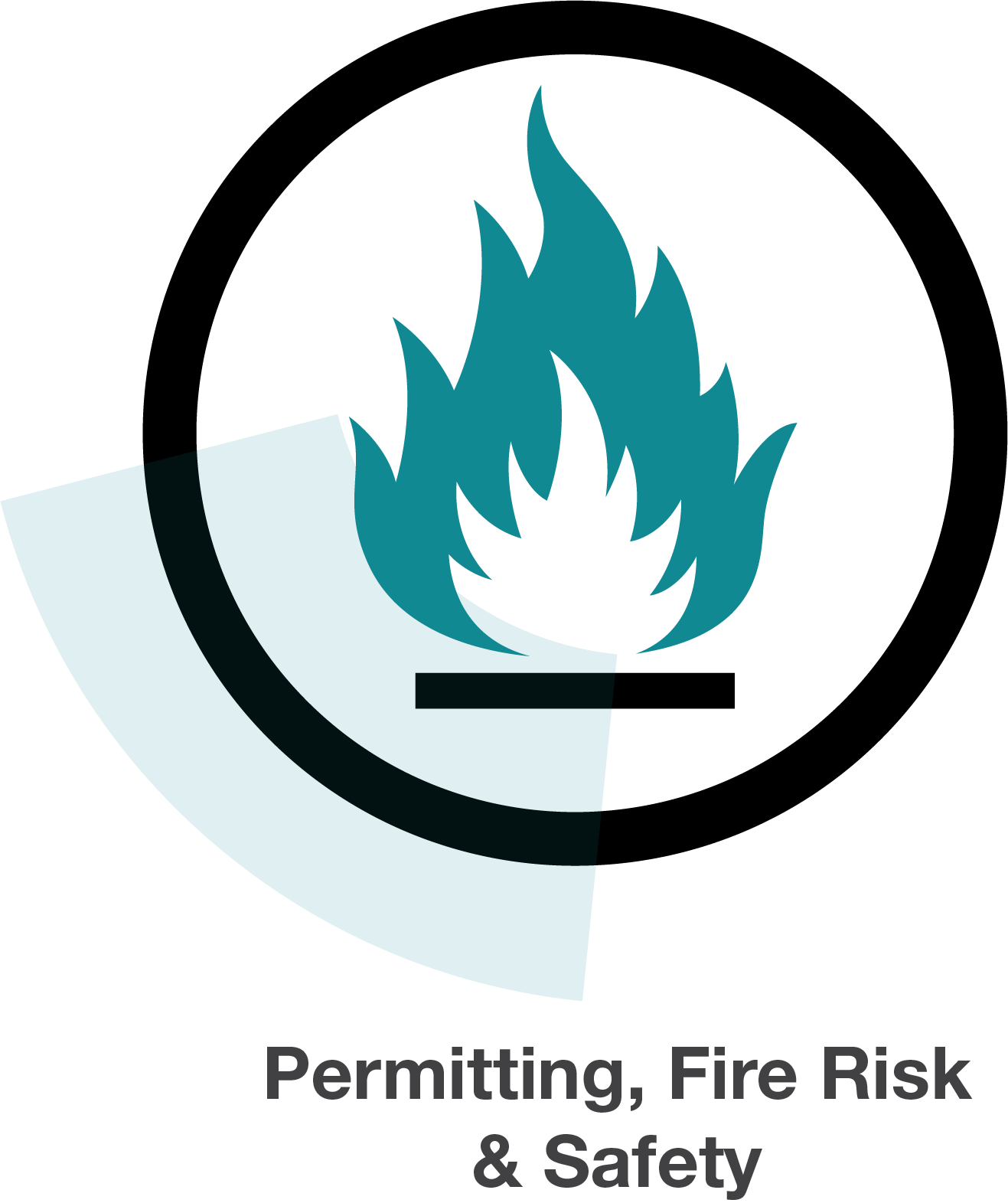
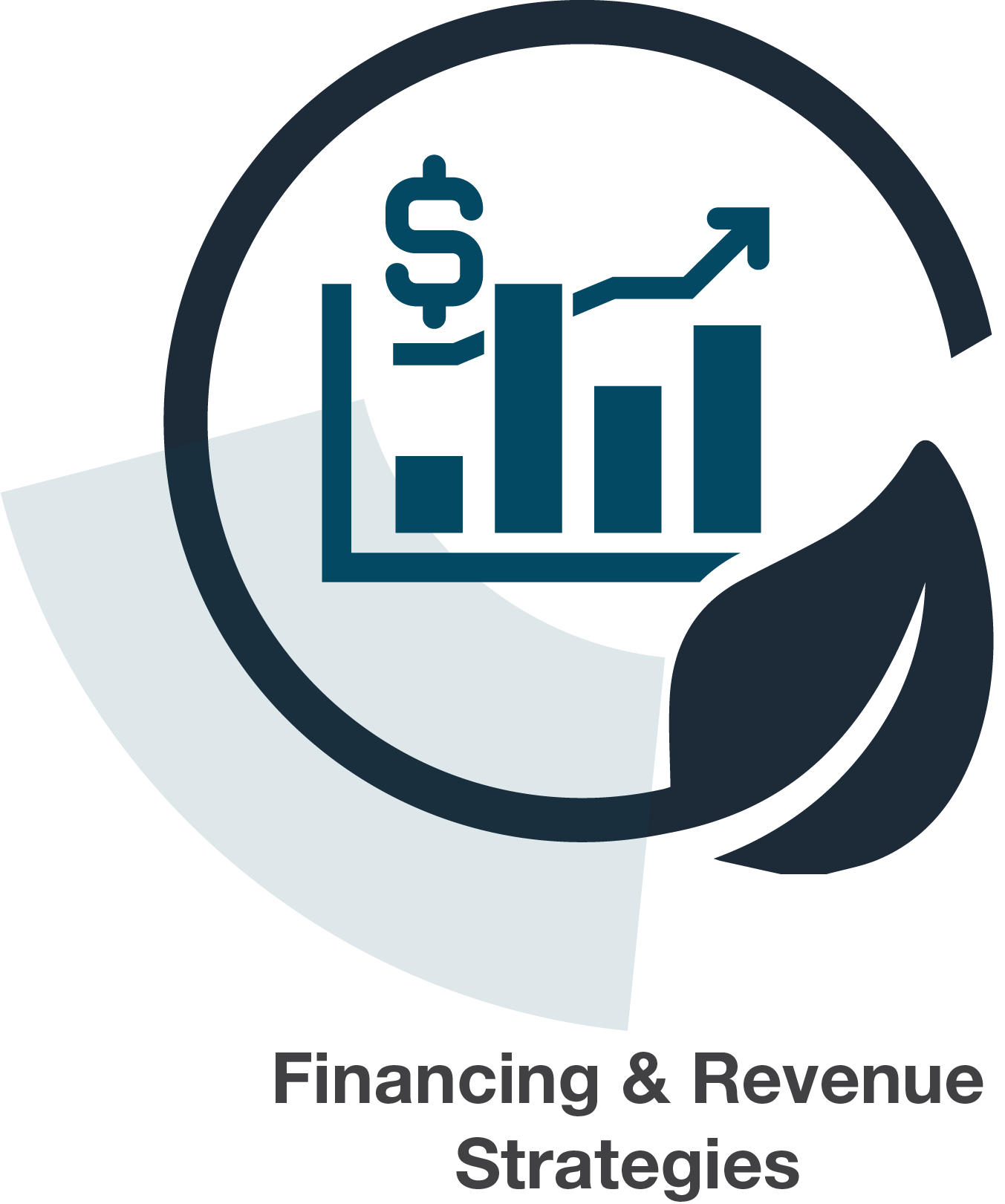
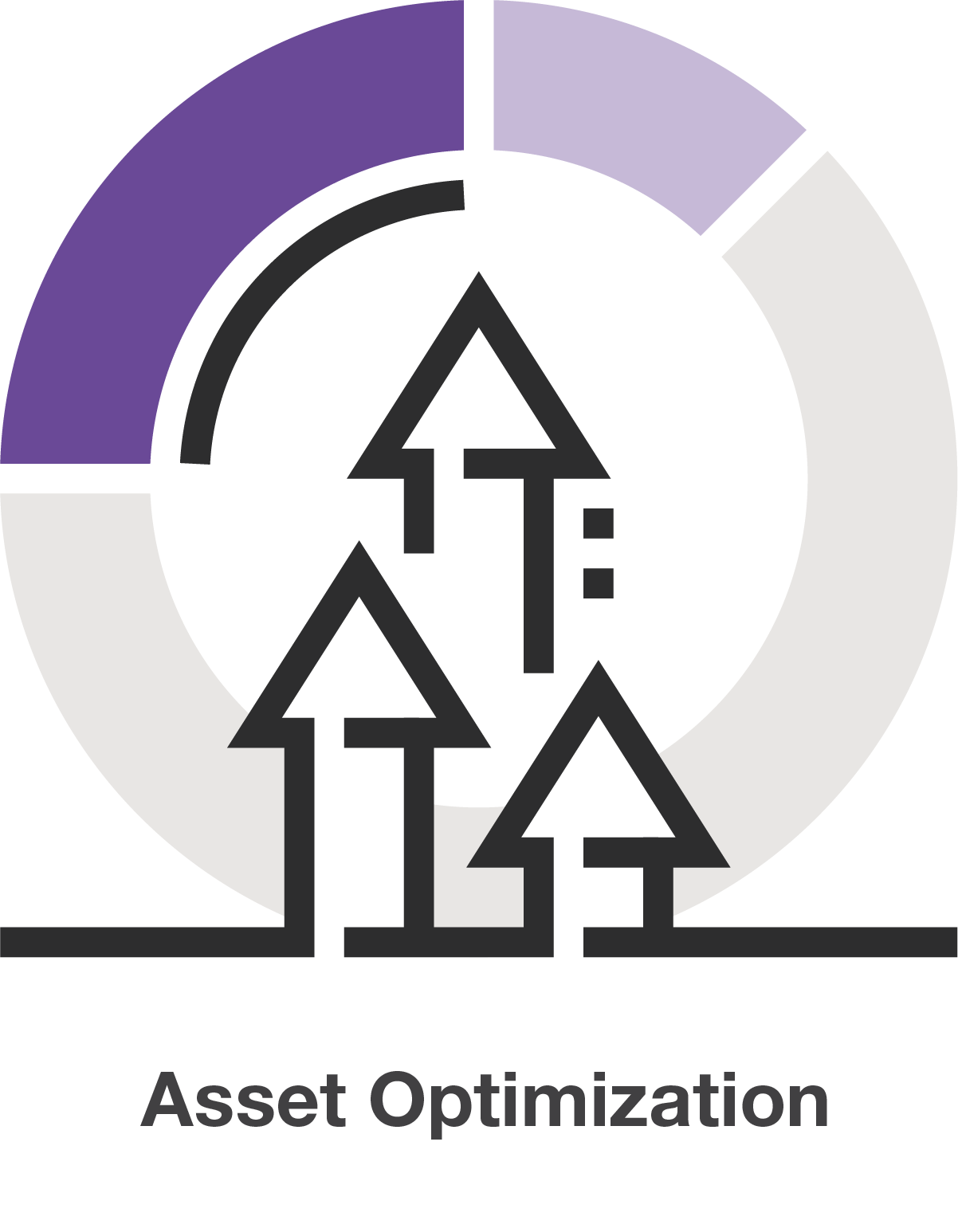
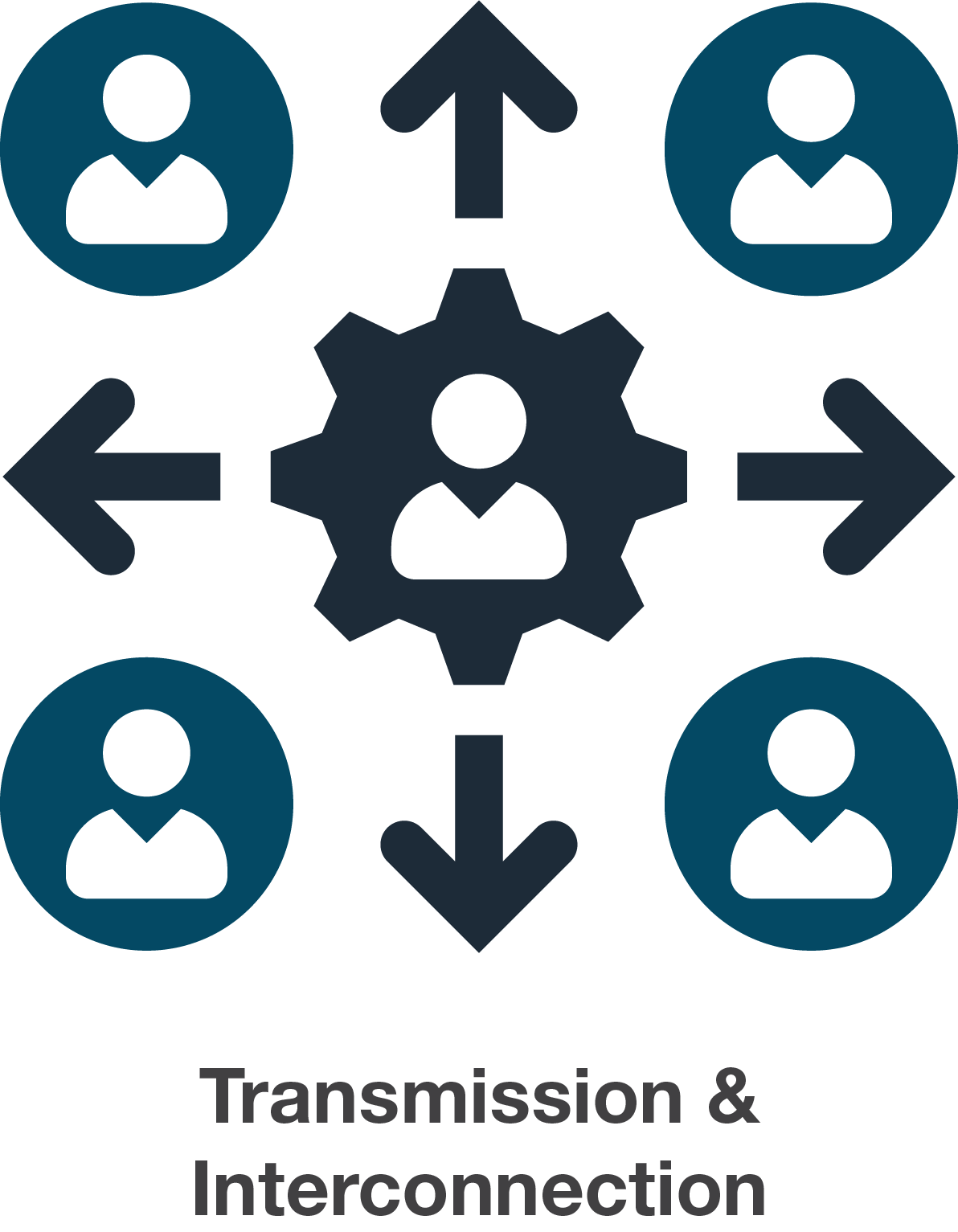

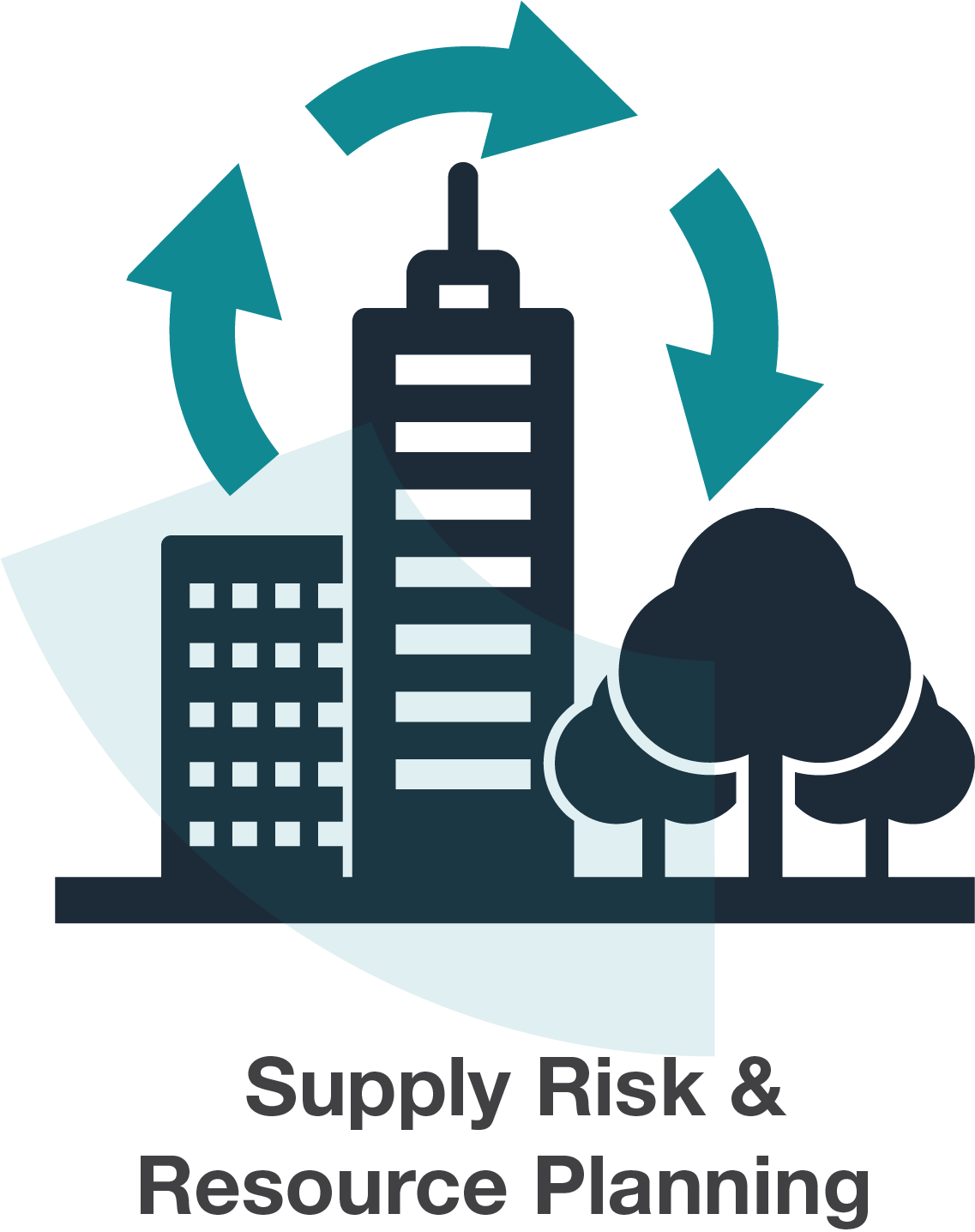









Why Attend in 2026?
The Energy Storage Summit USA is the only place where you are guaranteed to meet all the most important investors, developers, IPPs, RTOs and ISOs, policymakers, utilities, energy buyers, service providers, consultancies, and technology providers in one room. Join us in March to ensure that your deals get done as efficiently as possible.
We look forward to meeting you again in 2026 at the most comprehensive energy storage conference in the US, where all your questions will get answered and those important connections made.
New Features for 2025
- Live podcasts
- Onsite workshops
- Interactive discussion groups
- Drinks receptions
- After-parties
- US Energy Storage Awards
2025 Speakers



David Short
Senior Director, Enabling Resources Program
Ontario Independent Electricity System Operator (IESO)



Download our Energy Storage Summit USA 2025 Partnership Prospectus to learn more about:
- The Breakdown of Who You Can Meet
- Delegate Profiles and Job Titles That Attended in 2024
- 2024 Participating Companies
- Sponsorship Benefits and Options
- Delegate Ticket Prices and Protection
- Global Energy Storage Portfolio
News & Blogs
US energy storage to ‘retain momentum’ post-reconciliation bill, near-term rush to complete projects
US energy storage projects that begin construction by the end of 2033 will remain eligible for investment tax credit (ITC) incentives.





